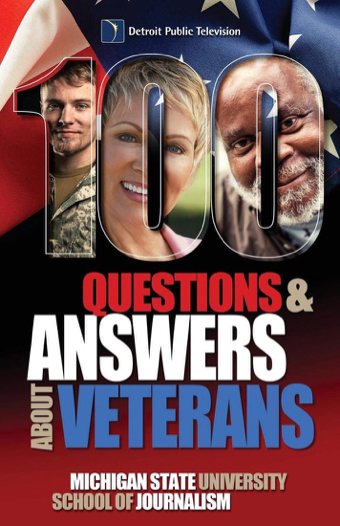By JOE GRIMM
Director of the MSU School of Journalism Bias Busters
Memorial Day, the last Monday in May, is a federal holiday that honors U.S. service members who have died in wars and military actions. The millions of living veterans who have served have a different federal holiday: Veterans Day. That is always on Nov. 11—and recognizes Armistice Day, the end of fighting in World War I at 11 a.m. on the 11th day of the 11th month of 1918.
Our entire community of authors, columnists and editors at Read the Spirit magazine is grateful for service members past and present. So, the first purpose of this column is to explain the difference between these holidays.
It is only natural that, as you encounter veterans around Memorial Day, you might want to recognize them for their service. But Memorial Day is to remember those who have died.
According to the Veterans Administration, there were 18.6 million U.S. veterans in 2023. Each year, about 200,00 people transition from active duty to civilian life.
When we thank military people, the gesture is filled with goodwill. That’s a good thing. But when we don’t know their personal experience, this can sometimes lead to misunderstandings.
Misunderstandings?
Think about it for a moment: One person’s military service is not like everyone’s service. Some prefer to talk about this; some prefer to remain quiet about it. Think about those veterans who sometimes wear their service like a badge on their sleeve, lapel or hat. It may seem like they’re actively advertising their service in the hope of sparking conversations. However, many who wear those badges on caps or coats explain that they wear them not to brag, but just in case someone else from their branch or unit might spot the symbol and reconnect. Those connections can be strong, even among people who have not met before.
So, rather than a hit-and-run thank-you, engage people if they are open to it. Rather than thanking them, ask a small question that shows you recognize the complexity of military service. An expression of interest can say more than a thank-you.
Maybe start with: “I see you are a veteran.” And watch the response.
If it’s welcoming, you might ask: “Which branch did you serve in?”
“When did you serve?”
“Where did you serve?”
These straightforward questions signify recognition and respect, but even they can uncover sensitive areas. They might surface painful memories or regrets. If they want to tell you more, you will learn something about their individual experience. If they don’t, that is OK. At least you took the time to look beyond the label to see the person.
Good starting points for learning about veterans—on any day of the year—are in “100 Questions and Answers About Veterans,” a guide in Michigan State University’s series on cultural competence.
This one describes the branches of the U.S. armed forces, what members are called, training, transitions, deployments and even a little military slang.

